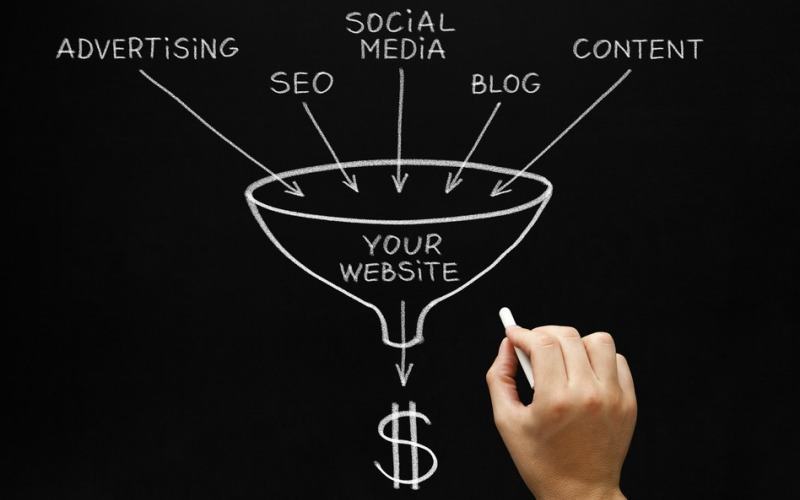Conversion Rate Optimization
We can easily define CRO as the method of using analytics and user feedback to improve the performance of your website. Conversion rate optimization is finding why visitors are not converting and fixing it. No matter where your traffic is coming from, there is a way to make it convert. Instead of just focusing on building traffic, spend a portion of your time on converting it.
Therefore, we know that Conversion Rate Optimization is:
- A structured and systematic approach to improving the performance of your website.
- Informed by insights — specifically, analytics and user feedback.
- Defined by your website’s unique objectives and needs (KPIs).
- Taking the traffic, you already have and making the most of it.
Moreover, definitely Conversion Rate Optimization is not…
- Based on guesses, hunches, or what everyone else is doing.
- Driven by the highest paid person’s opinion.
- About getting as many users as possible, regardless of quality or engagement.
Owing to the fact that CRO is important, you should care about it because it generates more sales for the same amount of traffic that you are currently receiving. A higher conversion rate means a better return on that investment (ROI), as well as it’s much more cost-effective to convert a higher percentage of the visitors you already have than to attract more visitors.
In addition to improving your ROI, optimization helps to defend against the limited attention span of your standard visitor by giving them what they want before they tire of looking for it and forge ahead.
- Higher conversion rate = better ROI
- More cost effective than finding more visitors
- Defends against limited patience of visitors
CRO – how and why to plan and test it!
All you need is a good Conversion Rate Optimization plan. To prepare one, you will need to:
- Try to find out what all the numbers mean, before trying to fix them.
- Based on those test results simply prepare a hypothesis.
- To test those hypotheses, you need to prepare a plan of action.
Do not forget that, this is a consistent, structured, and ongoing process.
Then, it is time for testing…
It is now the time for you to design a test strategy. Priorities – You need to start by making a list:
- Which points of concern come up repeatedly in user surveys?
- What seem to be your sites biggest issues?
- Which ones do you need to address first?
Do not forget to keep a written record of absolutely everything!


During designing, your test will work best if you consider a few points:
- Not too complicated for the beginning. Starting small will help you to change the measure and improve conversion rates.
- Begin with simple A/B tests. Do not make too many changes at once! A/B testing is the best method for finding statistically relevant results that are not tainted by changes in traffic quality.
- Think outside the box! You also should test any changes that may affect conversions on your site. Just because you think something is guaranteed to improve conversions does not mean you should not run a test first to make sure.
- Get a second opinion!
- Set a sample size and stick to it!
Whatever you do, do not end your test early because you think you have found a winner. You have to let your test run its course to be sure! Remember to always measure your final conversion goal. Micro-conversion improvements are great, but what really matters is how the change affects the conversion that will affect your bottom line.
Why user experience and funnel optimization are important?
User experience (UX) and funnel optimization efforts — more than just how it looks. By UX we are referring to the totality of visitors’ experience with your site, which means how easy your site is to use, how fast it is, and how little friction there is for your visitors.
It is important that UX cannot be overstated because it applies to funnel optimization.
When you’re talking about your funnel optimization efforts, you need to focus mostly on two aspects of UX:
- Reducing friction in the form of wasted clicks, excess pages, false starts, going to the wrong page, slow page loads, and other friction points that cause users to give up.
- Reducing cognitive overhead—another version of friction—that puts doubt and indecision into the mind of the user, causing them to waver over whether to convert.
Remember to account for the different traffic sources, levels of knowledge and engagement in your user base. You must map those in-bound user flows to conversion funnels that provide value to the user.
Below you can find a few examples of common user flows:
- Social Media- a user finds your site via a post on a social network
- Press or News Item – a user sees you mentioned in the news or a blog post and visits your site
- Paid Advertising – a user clicks into your site from a banner or Google AdWords ad
- Organic Search – a user clicks into your site from a deep link that was surfaced by a search
As you can see, the user comes with own needs, expectations, and level of knowledge, and they need to be treated accordingly.
In the nutshell a few methods of keeping the user moving through the funnel:
- Don’t forget to articulate benefits with simple proof points.
- Your content and design have to be organized to support call to action.
- Remove friction at every step by requiring as little as possible from the user – the minimum amount of information and load time, the fewest number of fields and clicks.
- Ask your users as little as possible, that will also remove friction.
- Interesting headline or hook that propels them through the last registration step.
It is much better to not use tricks (also known as “dark or anti-patterns”) to drive conversion, simply because the growth is inauthentic, as well as your reputation could ultimately be damaged.
Do not be focused on designing your user flow, you should remember that converting every visitor isn’t optimal. UX should make it easy for the visitors, so they will be able to tell their friends about their experience via social media and other sharing, driving new users into your funnel.
Landing page – the way to be successful
Let me introduce to you, the several key elements that appear on successful landing pages.
- The headline — A great headline is a great hook that grabs the attention of the visitor.
- Hero Image — the primary image on the landing page.
- Proof points — these are profits that “pay off” the promise laid out in the headline.
- Form or Call to Action — you may need either a form to collect data, a call to action or both.
- Social Proof — recommendations and other elements that certify your brand or product.
- Third-party endorsement — to create trust and confidence, you can take advantage of existing brands that are discernible by your target audience.
How to simply reduce bounce rates from your website
Do you know the scenario when, despite the billions of offered pages, users are visiting your website and suddenly, without any explanation—they are leaving?
Are you ready to find out why? Here are the reasons:
- Your website is NOT visually appealing. It is not too hard to fix. Just remember that sometimes, cheesy is not good. An elaborate design can create credibility.
- Your website is too complicated to use. Your visitors cannot be left confused or offended. Everything is important and poor layout, poor information architecture, technical errors, or malfunctioning buttons and page errors, will not help you to attract users.
- Your website does not meet user expectations. Remember that you need to keep promises you made. If you do not offer what users are looking for you will cause them to give up and look elsewhere.
- The people coming to your website are not the right people. You must be sure your ads accurately represent your product and keywords align with your site’s mission. . The type of person viewing the page is just as important as the page itself.
- There is no Call to Action. Users arrive to your site and simply they are confused. The user has to know what you want them to do; if not, there is a huge problem.
You must keep in mind that your bounce rates are contingent on your website’s unique challenges and user base. Do not forget, if you want to transfer visitors into users, they have to stick around. To fix all your problems and lowering your bounce rate, you simply need to find out why people are leaving.
Additional hacks!
Here it is, a few hacks and tips that you need to know to stay on top of the game. Always remember that “your way” should be fit to your site. Figure out what seems like a good match for your needs and user base, then analyze, test, and repeat.
- Pay attention to your site speed to ensure your optimization efforts are not pointless!
- Show only your best attributes. Check your site twice and to make sure that you’re clearly communicating, consider:
- Build a community. Allow user comments, reviews, and feedback, and the ability to share opinions. etc. Your current user base will be stronger.
- Social proof. Positive reviews from users will look perfect on your site.
- Third party validation. It is something like a social proof but instead of the endorsement, you use the logos of trusted brands to appropriate some of their brand equity for your brand.
- Referrals. Do not belittle the power of word-of-mouth or people’s referrals.
- Increase your AOV ( Average Order Value) thanks to:
- Bundling
- Promotions
- Cause-based incentives
- Rewards
- Gamification
- And the last but not a least – be friendly!
- Mobile friendly.
- Browser friendly
- Privacy friendly
- Language friendly
- User friendly
- Click friendly
- Time friendly
- Video friendly
- Rating & review friendly
After you’ve met a Conversion Rate Optimization, you find out how and why to test it, why user experience and funnel optimization are important, you know a lot about landing page and you learned how to reduce bounce rates from your website and read a bonus tips, you are ready to become a leader!

